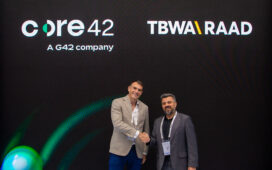Preethi Mariappan is head of digital at TBWA\Raad Digital Arts. She will be discussing gamification at the Dubai Lynx ‘Badge My Brand’ workshop at 10am on 5 March
“If you haven’t heard about badges, points, becoming mayor and winning discounts, it’s safe to assume you’ve been living under a rock. Popularly referred to as ‘Gamification’, it’s been touted as the next miracle mechanic for brand engagement and loyalty.
Don’t get me wrong; this is not going to be a long-winded rant against gamification. This is going to be a long-winded rant against gamification, as largely practiced in advertising. Looking past the hype can be tough. It certainly leads you to believe badges + points + rewards = gamification. Or worse, that creating branded games = gamification. But I’m going to assume most of us know the difference on this one, and revert back to the badging of gamification.
Too many campaigns ‘badge’ everything they can lay their hands on with too little relevance to people’s lives or to the brand itself. Since when did ‘liking’ a post on Facebook become a major achievement in life, to be instantly rewarded with a ‘super achiever’ badge?
So what is it really about? Briefly, gamification is about taking game design techniques that make games addictive and engaging, and using them in non-game scenarios, for a product, service or campaign. Sounds pretty exciting, and as is the case with everything digital, it truly is when used with common sense and imagination. These seem increasingly scarce going by the body of evidence.
Take a look at the numerous campaigns that ask you to complete their tagline to ‘earn’ a prize, upload a picture to ‘earn’ points or share with friends to ‘unlock’ a badge. The incentive takes centre stage and the engagement dynamic is reduced to mundane tasks. And you can understand why. It’s easy. Simply insert badge and provide reward.
With successful social platforms like Scvngr and Foursquare that use these aspects of gamifi-cation, like earning badges and rewards, it’s tempting to follow mechanics at a surface level and do the same. But what we forget is that these are media platforms built on social engagement models. That’s a very different thing from being a brand trying to use gamification for engagement.
A narrow focus on incentives devalues gamification. The sense of play and creativity are integral to both brand experience and real engagement. Gamification is a killer strategy precisely because it allows brands to create a community of brand enthusiasts. Exactly the same way gaming communities evolve around popular games like World of Warcraft and Angry Birds, by serving up memorable interaction.
The Nike+ programme is probably the best example of a brand using gamification today. The brand understands what motivates runners, and uses relevant game dynamics to grow a real community, drive product usage and influence consumer behaviour in the real world. The Nike+ app allows you track your own performance against your friends, set challenges, earn medals and access custom training programmes, win rewards etc.
What’s important to understand is that Nike focuses on engagement and uses gamification techniques like the progression dynamic for instance, to help runners run better and improve their performance. The experience is the reward. Other incentives are icing on the cake.
Also, Nike went out and created new products and software to make this happen. Often we tend to associate gamification as a by-product of social media and this is a great example of how it’s not.
Making gamification work for your brand is not rocket science. All it takes as a first step is shifting the focus from incentives to ideas, and from badges to behaviours. It may not be the cure-all that media pundits would have us believe, but it’s a powerful engagement tool for brands willing to invest in their customers and communities.”









